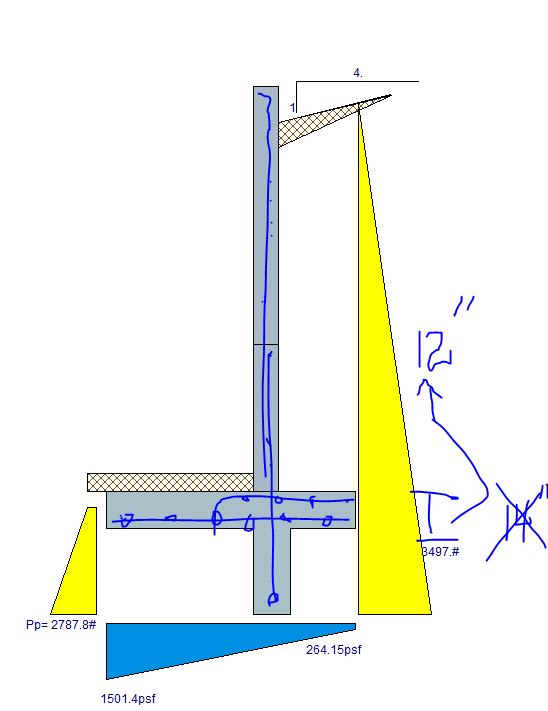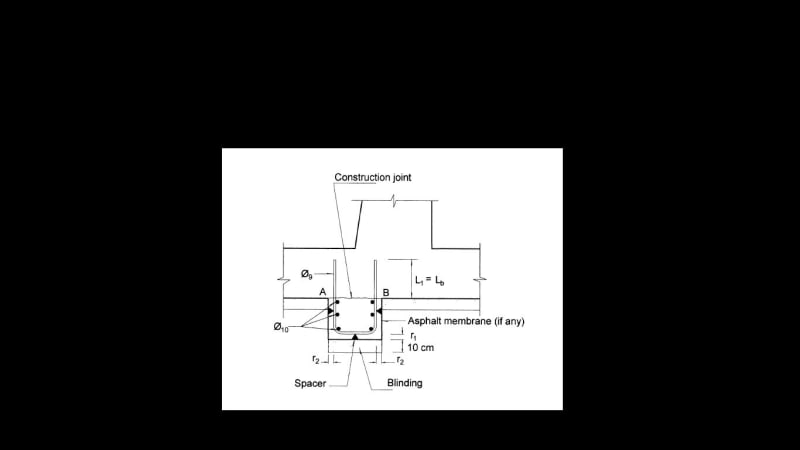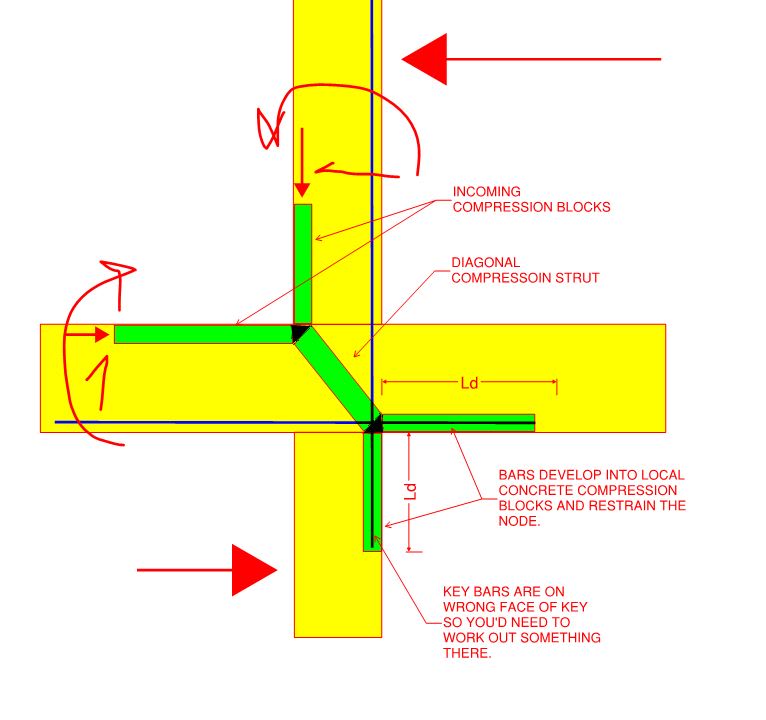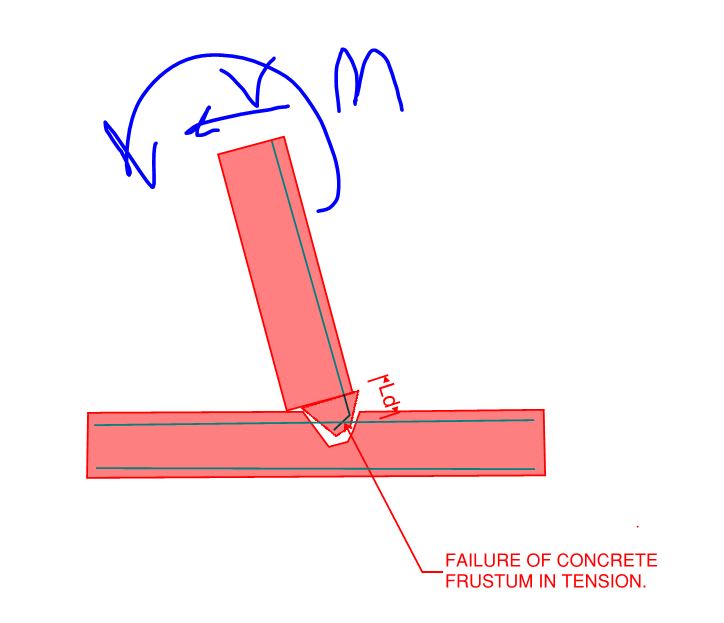Kootk said :
The error in that logic is failing to recognize the difference between rebar development and rebar anchorage. Development is a component of anchorage in most cases but, on its own, does not guarantee that the bars will not pull out of the concrete. And, even if it did, that's relying on concrete in tension for your primary load path which few engineers would be comfortable with in a situation such as this.
ok but isnt that what we are doing with our primary load path up in the stem all day every day? resistinig the moment primary load path with rebar tension? (what about my analogy of a welded plate to the rebar and under the footing for the "development,achorage" - impossible for it to fail in tension unless bar blew out.....would that not work either?? impossible!!!!
That said, I agree with you that your proposed detailing makes for an excellent moment connection. One of the best in my opinion. It just needs to be conceptualized in a robust manner as shown below. That leaves a few practical problems:
"One of the best in my opinion." isnt this somewhat typical?
1) Constructability as mentioned by my colleagues above.
please discuss. keys directly underneath and same thickness of wall are always preferred then?, but are they that common?
2) As shown, the rebar is in the wrong face of the key.
( my detail shows the key offest to line up with front of wall, and rebar in the center of the key.... is that really more of a constructability problem then aligned with back? please discuss the formwork issues in relation to the key placement and width.
3) Whether or not this arrangement actually reduces your footing thickness is something that would shake out of a strut and tie analysis of the joint.
only reduces the footing thickiness because you dont need to increase the footing to get the required bend from the verticals into the footing (2 inches less required thickness usually, unless everyone is always comfortable "reducing hook embed by stress ratio" option)
If architects would let me to this at roof level beam to column joints, I would be thrilled.

![[wink] [wink] [wink]](/data/assets/smilies/wink.gif)



![[bigglasses] [bigglasses] [bigglasses]](/data/assets/smilies/bigglasses.gif)


